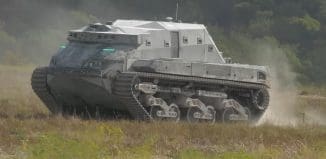Answer to The Rapidly Changing Battlefield
This post is also available in:  עברית (Hebrew)
עברית (Hebrew)
US Military seniors have recently detailed the budget crisis’ effects on readiness and modernization, and military associations have begun adding their voices to the warning as the issue continues to linger. Unfortunately, there is no silver bullet solution that will cure all the modernization issues the military faces, only time and consistent funding will provide long-term relief. However, in tactical communications and electronic warfare, there are some immediate solutions the military can implement to overcome near-term threats.
The future modernization of tactical communication and electronic warfare command and control systems depends on the adoption of open systems architecture and use of software-defined capabilities. In particular, software-defined capabilities are low-hanging fruit for the military. Implementing open architecture is equally important, but it takes time and coordination. On the other hand, software-defined capabilities allow for quicker upgrades, are more affordable and give more operational flexibility in contested environments.
According to c4isrnet.com, software-defined systems are becoming the answer to the rapidly changing and highly complex battlefield. The ability to upgrade and update existing software to meet and beat new and emerging threats gives warfighters the combat edge. The most significant “core” technology that makes these new capabilities possible is the software-defined radio (SDR).
The technology supports a wide range of capabilities -soldiers can now jam and defeat enemy signal jamming and gather and share intelligence with friendly sources at longer distances, among other abilities. At a practical level, the SDR has enabled users to make quick upgrades, easing the logistical burden of having to physically change every component to keep pace with changing requirements. Major weapons and communications platforms are costly to continuously upgrade; however, many programs have found that incorporating software-defined technologies enable the platform to keep pace with technological evolution.
The worldwide proliferation of advanced digital radar and communication systems has caused a shift in the way traditional EW is executed. SDR assists in keeping EW systems up-to-date. As communication and radar systems become increasingly digital, via the adoption of software-defined capabilities, their behaviors and characteristics can be modified at a much more rapid pace than ever before, hence the need for EW systems to become software-defined so that can adapt their response in real-time.
The benefits of software-defined systems apply to all domains – undersea, terrestrial, airborne and space. Within each, there are challenges when it comes to making changes to or replacing pieces of equipment. With a satellite, for example, the ability to remotely refresh and upgrade the software is a huge benefit. Looking ahead, the battlespace will only become more crowded and congested. The ability to rapidly innovate and upgrade systems, many of them exquisitely complex, has not existed, putting warfighters at a disadvantage and operations at risk of failure. The fielding of new systems can take upwards of a decade, ultimately resulting in technology that can be a generation or more behind. Software-defined technology will enable users to continuously upgrade their technology without the need for broad-scale recapitalization – critical in an era of budget constraints.































